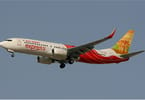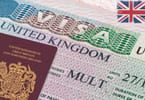For every dollar invested in business travel, businesses experience an average US$12.50 in increased revenue and US$3.80 in new profits, according to a study conducted by global research firm Oxford Economics. This is the first clear link between business travel and business growth as American businesses are planning their 2010 budgets and federal policymakers are looking to stimulate the American economy.
“This study shows that not all spending cuts are smart cuts,” said Adam Sacks, managing director of Oxford Economics. “When companies reduce their travel budgets, there are negative consequences that we can now quantify in terms of lost revenue and profit growth and in terms of giving competitors a distinct advantage.”
This is the first time that the return on investment of business travel has been successfully measured. The study found that curbing business travel can have a strong negative impact on corporate profits. The average business in the US would forfeit 17 percent of its profits in the first year of eliminating business travel, and it would take more than three years for profits to recover.
“Business travel IS economic stimulus,” said Roger Dow, president and CEO of the US Travel Association, which commissioned the study. “In order to grow, businesses have to invest. This research shows that face-to-face meetings and incentive awards to top performers are among the smartest investments companies can make.”
Business travel in the US is responsible for US$246 billion in spending and 2.3 million American jobs; US$100 billion of this spending and 1 million American jobs are linked directly to meetings and events. In the first six months of 2009, business travel spending is down by 12.5 percent and business travel volume is down more than 6 percent. A 10 percent increase in business travel spending would increase multi-factor productivity, leading to a US GDP increase between 1.5 percent and 2.8 percent.
“In tough economic times, many business executives have an understandable short-run focus on managing costs. The report points out the less visible – but significant – long-term benefits resulting from business travel, such as partnership building and new business opportunities,” said Dr. Martin A. Asher, adjunct professor of finance at the Wharton School. “Increased business travel in this economy can actually increase sales and reduce the financial decline companies might otherwise suffer.”
Both executives and business travelers estimate that 28 percent of current business would be lost without in-person meetings. Roughly 40 percent of prospective customers are converted to new customers with an in-person meeting, compared to 16 percent without such a meeting. Executives cited customer meetings as having the greatest returns, approximately US$15-US$19.99 per dollar invested, with conference and trade show participation returns ranging from US$4-US$5.99 per dollar invested.
The Oxford Economics Business Travel study is sponsored in part by the Destination & Travel Foundation, a combined effort of the US Travel Association and Destination Marketing Association International. The mission of the Destination & Travel Foundation is to enhance the destination marketing and travel professions through research, education, visioning, and development of resources and partnerships for those efforts. For more information, visit www.destinationmarketing.org.
WHAT TO TAKE AWAY FROM THIS ARTICLE:
- The average business in the US would forfeit 17 percent of its profits in the first year of eliminating business travel, and it would take more than three years for profits to recover.
- “When companies reduce their travel budgets, there are negative consequences that we can now quantify in terms of lost revenue and profit growth and in terms of giving competitors a distinct advantage.
- A 10 percent increase in business travel spending would increase multi-factor productivity, leading to a US GDP increase between 1.





















